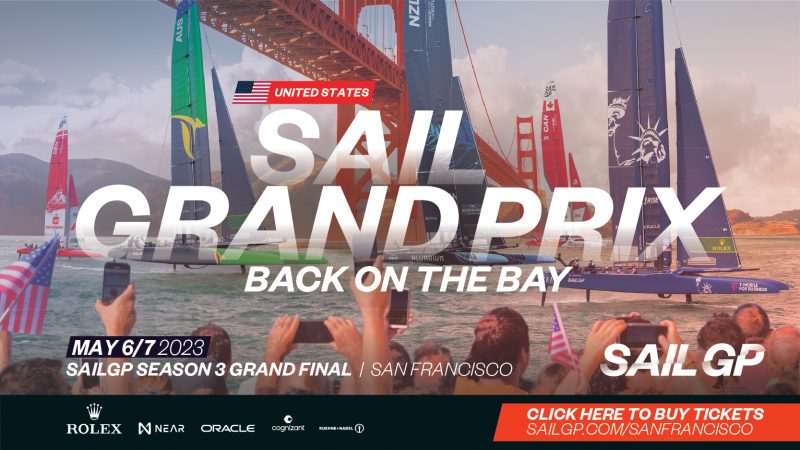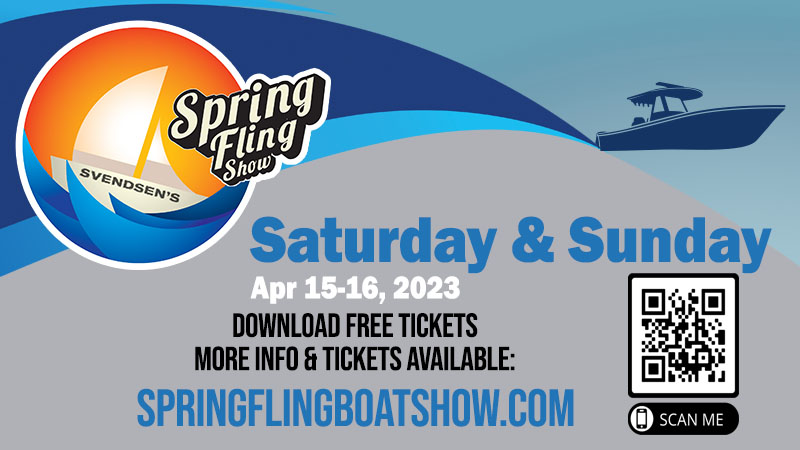
St. Francis Yacht Club Announces Offshore Mixed Doubles Race and 5O5 Worlds
Shorthanded racing is all the rage today. Two events on the 2023 St. Francis Yacht Club calendar will add to the spectrum of racing opportunities on the Bay. Though very different, both are doublehanded — one for offshore and one a dinghy world championship. For 2023 the StFYC is introducing a new event to the Bay, the Offshore Mixed Doubles Race, scheduled for July 29–30, 2023, open to doublehanded crews of mixed gender. They will also be hosting the Worlds for the two-person 5O5 dinghy.
“We are very pleased to announce the Offshore Mixed Doubles Race,” said Dave MacEwen, offshore sailor and vice chair of St. Francis Yacht Club’s Executive Race Committee. “Doublehanded racing is extremely popular on San Francisco Bay — look at the success of the Three Bridge Fiasco. Adding an offshore element will take this format to a new level locally.”
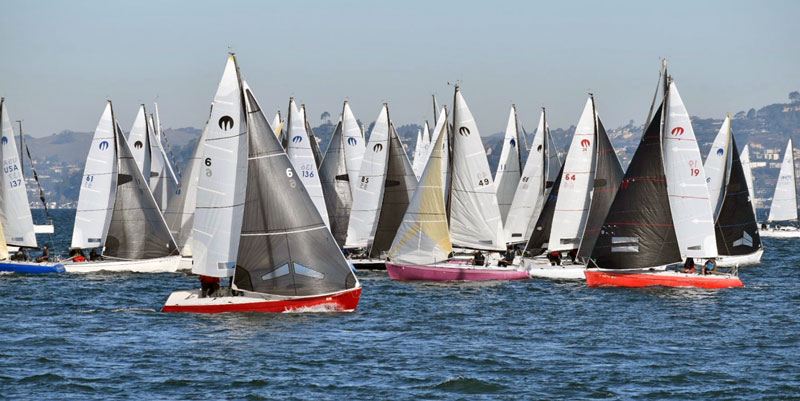
The single-distance race of approximately 24 hours will stretch across San Francisco Bay and its approaches to the Gulf of the Farallones. Boats eligible to enter include monohulls with a minimum LOA ≥ 23-ft 9-in and a current NC PHRF rating, plus multihulls with a minimum LOA ≥ 23-ft 9-in and a current SFBAMA PHRF rating. An ORC Double Handed (DH) ORCi or ORC Club certificate is optional.
“As an ocean racer for 25 years and as a St. Francis Yacht Club member for longer, I’m excited to see this regatta on our shores, in a format developed for the Olympics and designed to reduce barriers to the offshore version of our sport,” said Michael Moradzadeh, Principal Race Officer for the event.
Doublehanded offshore racing has been considered one of the fastest-growing segments in the sport of sailing, with new events worldwide and new doublehanded classes in many ocean races. Races for mixed-gender crews are a growing part of the doublehanded movement, and this format has been considered for addition to the Olympic Sailing program. Though not selected for the 2024 Paris Games, interest in mixed-doubles offshore racing is growing globally.
If you’re not already planning to sail shorthanded to Hawaii in the Singlehanded Transpacific Race leaving on June 25, this could be the shorthanded race for you.
5O5 Worlds
The club has also recently opened registration for the 5O5 World Championship and North Americans, to be held September 21 to October 1. They expect up to 80 boats to participate, making the winner a likely candidate for the Jake Wosser Trophy as the winner of the largest one-design regatta on the Bay in 2023.
The two-day 5O5 Pre-Worlds and North American Championship will be sailed in advance of the regatta on September 23–24. The 5O5 World Championship will be sailed September 26 through October 1, with five days of racing plus one lay day for a total of six days. Initially slated to be held in Santa Cruz, CA, the event was redirected to San Francisco due to harbor access issues in Santa Cruz.
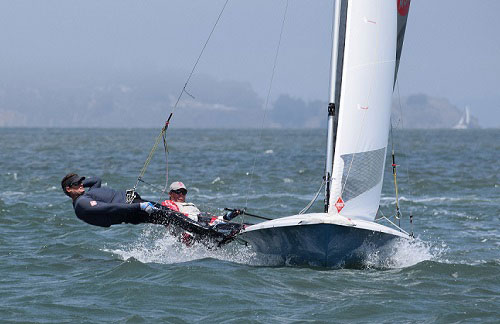
“St. Francis Yacht Club is happy to host this world-class event,” said Beau Vrolyk, 2023 commodore of St. Francis Yacht Club. He has helped run regattas for the 5O5 fleet for many years, including World and Continental Championships, and is thrilled to be hosting the 2023 World Championship.
For three-time 5O5 World Champion Mike Holt, to be able to participate in a World Championship event on his own turf is exciting — particularly in a fleet as competitive and challenging as the International 5O5.
“It’s great to have the regatta in California. It’s an amazing venue in an iconic, spectacular piece of water,” Holt stated. “It was very gracious of StFYC to step in at the last minute to host the event. It’ll be fun and I’m looking forward to it.”
“I’ve pretty much done only 5O5 sailing all those years. I’ve maybe taken a few years off here and there and sailed other things — keelboats, dinghies, 49ers, 18s — but it’s what I keep coming back to,” said Holt, who resides in Santa Cruz. “When you live on the West Coast it’s really the only good high-performance sailing that you can do safely, and it is a great fleet.”
Holt will be racing with his two-time World Champion crew Carl Smit, from Annapolis, MD, and the pair have a longtime friendly rivalry with Mike Martin, “the other Mike,” Holt noted with good humor. Martin, who lives and trains in the Bay Area with crew Adam Lowry, is a four-time 5O5 World Champion and twelve-time 5O5 North American Champion.
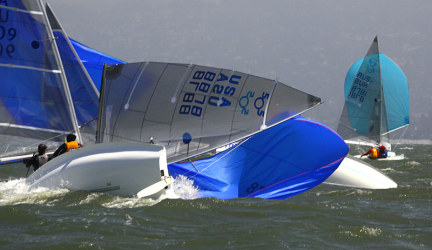
“We’ve heard a lot of interest from Europe, Australia and from all over North America — we’re expecting as high or higher than numbers for Cork, Ireland, last year,” Turner continued. “Holding the event on the West Coast of the US can be a bit of a hurdle for the European fleets, but we have fantastic support from the local fleet as well as the Port of Oakland close by, so logistics will not be as challenging as they may appear for our overseas competitors — we hope they come!”
StFYC commodore Beau Vrolyk encouraged sailors to look forward to more than just world-class racing: “This fleet and its epic sailing style have a special place in the hearts of St. Francis members. It’s great to have them back again. This year, we are going all out to give everyone what they came here for: good breeze, close competition, and a racecourse in the most beautiful spot on the San Francisco Bay. It’ll be a beam reach to the bar!”
Looking at past champions since 1999, you’ll see all the winning Americans are from California. Can you name them without looking at the list? Also, don’t forget to wish all the 5O5 sailors Happy 5O5 Day, coming up on Cinco de Mayo.
The St. Francis YC Offshore MIxed Doubles Race and the 505 Worlds are two great challenges coming up on San Francisco Bay.
Trimaran ‘No Name’ — One Thing Leads to Another
Stephen Wolf called our office a while back and described a sailing adventure in the ’70s. The more he told us, the more we wanted to hear. It was a 10-year, 40,000-mile circumnavigation on a 24-ft trimaran with a crew of two that started in Gashouse Cove. He sent some classic photos and a vignette of one leg of his and wife Margo’s amazing voyage.
Our boat, No Name, was a Piver-designed Nugget trimaran sloop built by Cox Marine in England and imported to the US in the mid-’60s. At 24-ft by 24-ft with a draft of 18 inches, it was a trailerable boat with fold-down floats. A nicely built and finished boat, built as a daysailer with a small, open dog house. The interior had a five-foot settee and a ball head. Gasketed plexiglass windows provided great visibility. It weighed 1,000 lbs. and could carry an additional 1,000 lbs. A motor was left ashore in Hawaii when my future wife Margo came aboard. We carried 12 sails ranging in size from a 25-square-foot spanker to a 300-square-foot drifter. Self-steering was fitted but there were no electrical devices other than flashlights. A sextant was used for position finding. A Sea Swing single-burner gimbaled stove, originally using Sterno, was used for cooking. Fitted with a pop-up aluminum rudder and a large daggerboard, it was a fast and stable boat, and comfortable in most conditions. Through our trip it was greatly modified. No Name proved to be an excellent and seaworthy craft, accomplishing some remarkable passages. It was also a very forgiving boat. Through the ’70s, No Name carried us on an improbable journey, logging some 40,000 miles.
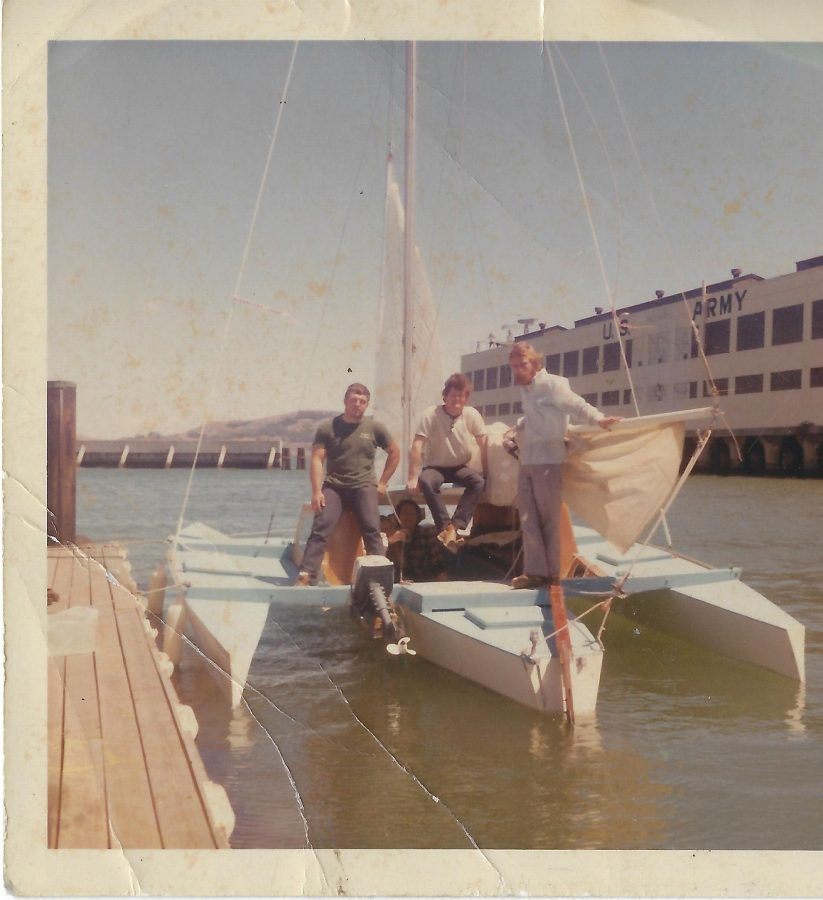
We had spent several years in the tropical Pacific and made our way west. Decided to give New Guinea a try, then Indonesia, Cocos Keeling and the Seychelles, where we would have to decide how to get to the Atlantic. The Red Sea or the Cape of Good Hope? We were leaning toward the Cape of Good Hope, as the Red Sea passage is very difficult for a sailing vessel. That is until the skipper of the barkentine Black Pearl offered us a tow up the Red Sea if we could get to Djibouti on our own. The offer of a tow was one we could not refuse.
We cut short our time in the Seychelles and met the Pearl in time to secure a tow. We set off in tow for a carefree trip to the Med. It was not to be. The Pearl was unable to make headway against the eight-foot waves. The prop would break through the surface and would spin as the swell passed underneath the hull. They turned around and beat a hasty and lovely retreat under full canvas, returning to Djibouti. We continued on but could not make any significant progress and soon followed the Pearl. It was a magnificent sail.
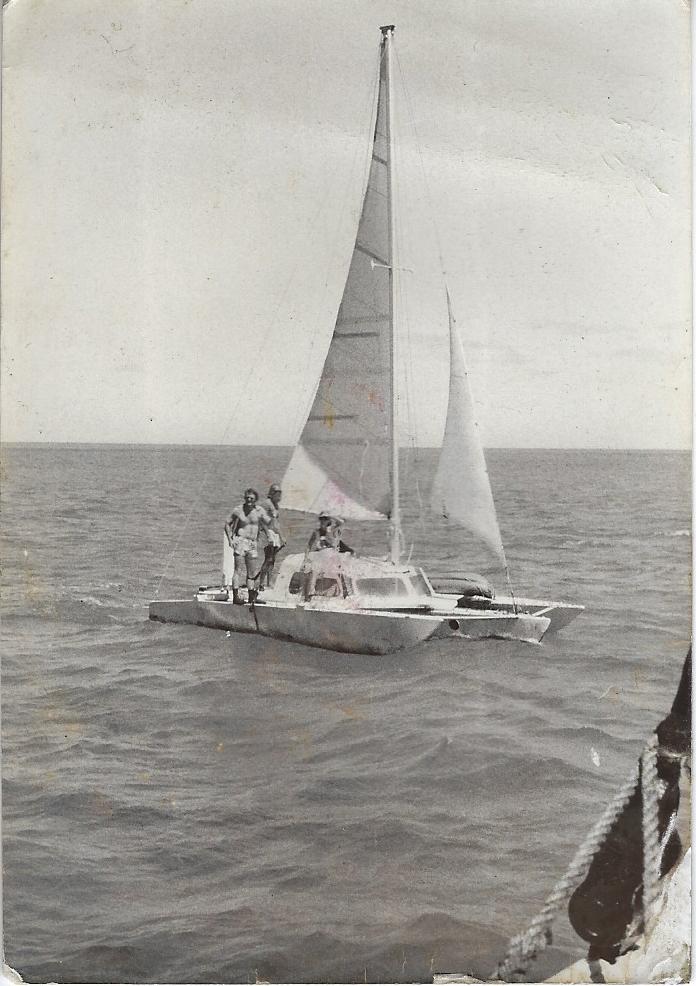
The Pearl was broken down and required major work. The skipper left and a skeleton crew remained, awaiting money and a new command. A month later we tried again on our own but without success. A new skipper and crew found the Pearl heading north without No Name astern. We were stuck in North Africa, believing it was not practical to head south around the Cape, yet the Red Sea was perhaps too much for us. We lived and worked in Djibouti, gaining local knowledge from the dhow captains and nautical books, charts and logs. In December there is often a short window when the wind blows southerly up the Red Sea as far as Jedda. We decided to give it a try.
Continue reading at Latitude38.com.
SailGP San Francisco Season 3 Grand Final Tickets On Sale Now
Meet the Companies Building a Green Future for Sailboat Engines
One of the reasons sailors connect to the planet differently is the limited amount of non-renewable energy sailors can or want to carry with them. They therefore seek to be energy efficient and self-sufficient. Sailors appreciate being powered by the wind, and many are endlessly curious about innovative energy solutions such as wind power, solar power, hydropower, fuel cells and more. We’ve been checking out a few innovations that could add more sustainability to the world of sailing.
Alameda-headquartered company Sila is utilizing a market-proven nanocomposite silicon anode, named Titan Silicon™, to create improved performance and longevity in lithium-ion batteries. Starting with consumer electronics, the technology is now being introduced to electric vehicles, such as the Mercedes-Benz G-Class series.
Using alternate sources from which to power batteries, Palo Alto startup Noon Energy Inc. is developing a rechargeable battery that turns solar and wind electricity into on-demand power.
In Berkeley you’ll discover the USA base for PowerUP Energy Technologies Inc. The company focuses on developing portable, green energy and currently produces a series of hydrogen fuel cell-based generators. The UP series generators are promoted as being lightweight, user-friendly, safe electrical power sources that provide entirely green electricity for appliances. Plus they can charge smartphones, lights, GPS and many other devices, and are suitable for indoors and outdoors.
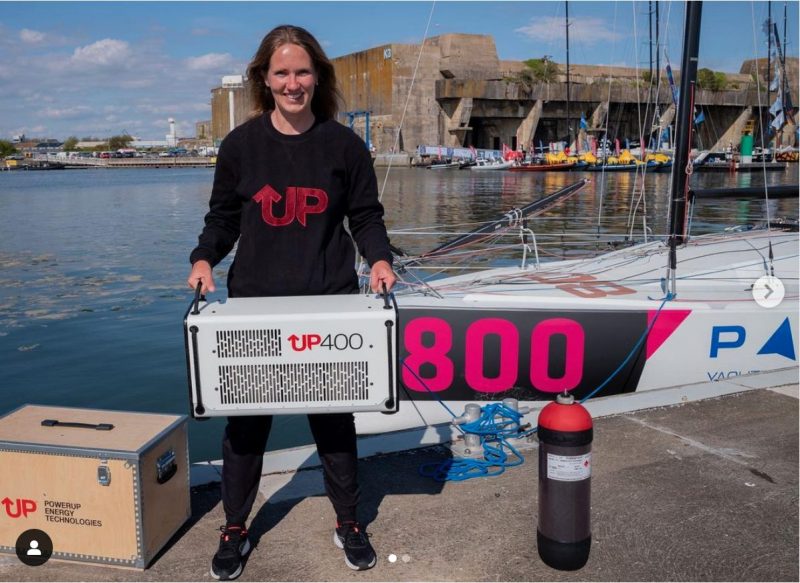
Chris Boome gave us the ‘heads up’ on this last company based in Israel. Though not in the Bay Area, their work is also of interest to us in that they produce the Aquarius Engines™ power generator — a “Two Sided Free piston Linear engine (FPLE), generating two positive work events with a single piston each time, connected to two Linear Generators.” Or, put simply, “an electric generator combined with an internal combustion engine.” Here are some easily relatable facts:
- Gasoline or NG, LPG, CNG fuel — runs on synthetic, bio, and fossil fuels within the same engine
- Significantly lower weight, size, volume, cost — 23lb; 124 x 58.5 x 108cm.
- Only 2% loss due to friction (regular engine 15%)
- Low frequency — reduces wear = increased durability and life time expectancy
- Reduces generator downtime
- Single or clusters of generators configuration
- Maximizing continuous motion by longer expansion stroke for high Efficient conversion of mechanical energy to electricity
- Aquarius Engines has partnered with Israeli company Galooli to transition this generator into a “smart, remotely operated and optimized energy asset that can be monitored and managed from anywhere, at any time.”
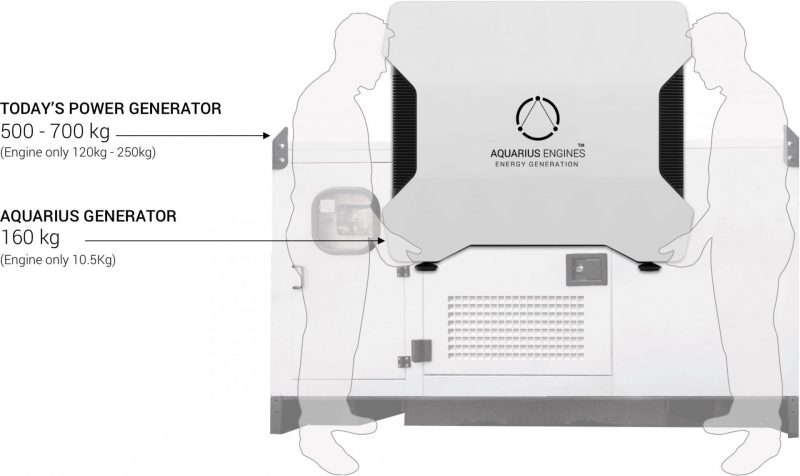
Check out this video for more information:
All of the above are interesting and exciting innovations for the energy and transport industry, and with time, we expect they will become more available to the marine industry, and eventually, all sailors. Read more about “green energy” in sailing in Latitude 38‘s April 2022 issue.
In the meantime, “Sun’s up, sails up!”
Have a great weekend, readers!
Getting Into the Weekend Vibe with Salty Phrases — Part 3
A few months back we shared a bunch of salty phrases that had been compiled by Latitude 38 editor John Riise. He did such a good job of seeking out the weird and the humorous that we’ve had to publish the phrases over three different postings. Today, we share the final chapter in JR’s “Salty Phrases.”
Over a Barrel: If you’ve got someone “over a barrel,” they are in a tight spot. In the old days, when a sailor was to be flogged, he was tied over a grating, to a mast — or over a barrel, either the barrel of a gun or an actual wooden barrel.
Pipe Down: This phrase, meaning “be quiet” comes from the practice — still done in today’s Navy — of signaling significant happenings aboard ship with a whistle from the bosun’s pipe. Depending on notes and inflection, these signals vary from reveille in the morning, to the arrival of the captain or other VIPs aboard, to the last “pipe down” of the day indicating “lights out and be quiet.”
Being Pooped: This term for “exhausted” originally referred to the aftermost deck on an old sailing ship — a raised structure above the main deck called the “poop” deck (from the French poupe, meaning stern). If a ship was running before big following seas, and got pooped — a big sea broke over the stern — her luck might be exhausted, as it could slew the ship sideways and make her vulnerable to rolling over.
Minding your Ps and Qs: When ashore, tavern keepers would often remind sailors to “mind your Ps and Qs” — their pints and quarts of drink — to make sure they had the money to cover their drinking tabs. Today, ashore, it also means to pay attention to what’s going on.
Rummage Sale: The French word for stowing, as in stowing cargo, is arrimage. The anglicized version, rummage, was often used to describe a cargo of all sorts of different things. A rummage sale was when damaged cargo was put up for sale.
Shake a Leg: In the good old days, sailors were sometimes allowed to take their, ahem, “wives” to sea, at least on short outings. In the morning, when the order was given to get up and get going, the women would customarily dangle a leg out of the hammock to show they weren’t male. Oddly, today the usage means the opposite — to get up and get going.
Son of a Gun: Those women mentioned in “Shake a Leg” sometimes gave birth aboard ship. Since the crews’ hammocks were slung on the gun deck, often right above the cannons, and since it wasn’t always clear who the father was, a male child was sometimes entered in the ship’s log as “son of a gun.” Presumably, there were also “daughters of a gun,” but only the “sons” phrase has endured.
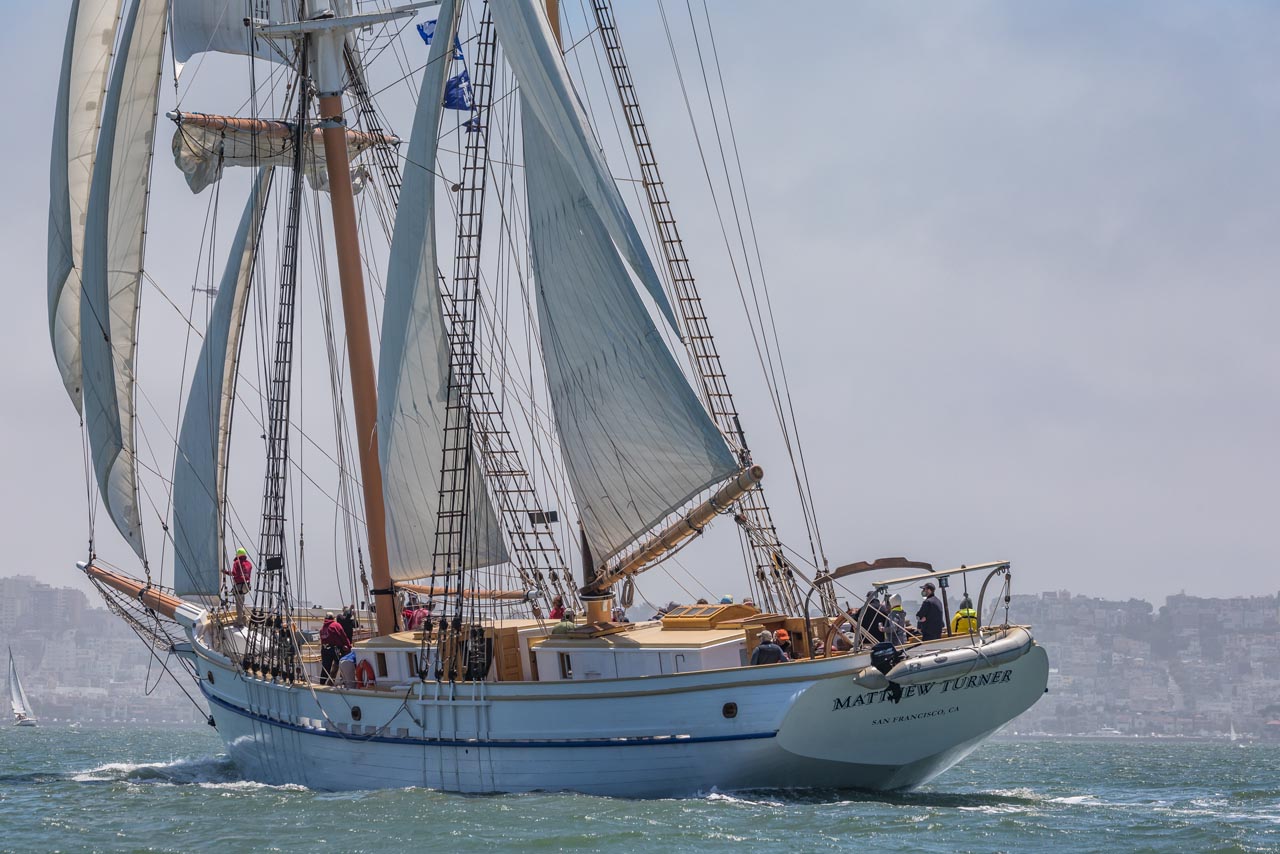
Taken Aback: Someone surprised by bad news is often said to be “taken aback.” Aboard a square-rigger, the phrase was used when the sails got backwinded — which was also an unpleasant surprise for those aboard.
Taking Turns: Aboard an old sailing ship, a “turn” referred to the end of a watch when the hourglass was turned over. Then, as now, it meant allowing the next person to have their chance.
Toe the Line: When crews of sailing ships gathered on deck, they lined up in rows with their toes touching a deck seam. Anyone off a little would be told to “toe the line.” Ashore, it has a similar meaning — accept the authority or policy of a particular group.
The Whole Nine Yards: Commonly used to mean “all in” or “totally committed.” No one has gone the, ahem, whole nine yards in finding the true origins of this phrase. It has been attributed, with varying degrees of logic, to various sports; the volumes of graves and coal trucks; the area of a funeral shroud; the length of a bridal veil, bolt of cloth or machine-gun belt — and lots of other stuff. The nautical version is that most early warships had three yardarms on each of three masts, and those yards would obviously change sides during a tack. So during battle, when a ship tacked, that captain was said to go the whole nine yards, meaning he totally committed to the maneuver. (If it was a ruse, they might backwind only three or six yards, then flip back onto the same tack.)
We hope you’ve enjoyed reading about the origins of some of today’s well-known phrases. Get the full list of “Salty Phrases” with Part 1 and Part 2. And if you know of any more, feel free to drop them into the comments below.
Special Pacific Puddle Jump Report: Abandonment of ‘Lucky Dog’
We are sorry to report that the Pacific Puddle Jump rally vessel Lucky Dog lost its rudder Wednesday, which ultimately led to the crew’s decision to abandon ship yesterday.
The Vancouver-based Catalina 470 suffered a complete loss of steering near Lat 4.48.8S Long 129.49.2W (roughly 650 miles from the nearest Marquesas landfall). But there was no obvious breakage of its twin-helm system, autopilot controls or quadrants, and no sea water ingress. Using an underwater camera, owners Dan Streiff and Jeanne LeBlanc-Streiff, eventually confirmed that their rudder was gone. Their rudder post had sheared off, leaving only a cylindrical stub approximately one foot long protruding below the hull.
The situation was conveyed to US Coast Guard JRCC (Joint Rescue Coordination Center) Honolulu, which has rescue coordination jurisdiction in that part of the Pacific. They looked for commercial vessels that might be able to offer assistance but initially found none. However, a quick look at the PPJ fleet tracking map showed that the Hermosa Beach-based Hylas 46 Beleza was roughly 85 miles behind Lucky Dog on a very similar track, and they were willing to rendezvous and take Lucky Dog’s crew aboard.
Beleza being at that location at that time was truly serendipitous, as owners Chris and Michelle Maler would have been much farther down the track if they hadn’t volunteered to bring fuel to the dismasted Westsail 43 Niniwahuni late last month.
Beleza is now sailing toward landfall, with anticipated arrival in several days. Meanwhile, Lucky Dog was left to drift with both her AIS and inReach tracker active and her running lights lit, as requested by Tahiti JRCC (which has taken over jurisdictional responsibilities). Other shoreside resources, including the Tahiti Crew staff, are standing by to deal with bureaucratic issues, and a number of fellow cruisers in Hiva Oa and Nuku Hiva are looking at local vessels capable of retrieving Lucky Dog and towing her to port.
We applaud the generous spirit of the Beleza crew and other helpful French Polynesia cruisers, and we salute the calm professionalism of the USCG and Tahiti JRCC officers, who are always standing by to assist in maritime emergencies.
We are extremely hopeful that this story has a happy ending, so Dan and Jeanne can continue their cruising dreams.
Mark Your Calendar for Svendsen’s Spring Fling
More about Svendsen’s Spring Fling Boat Show and free tickets here: www.springflingboatshow.com Latitude 38 has opened a new online store and will have a clearance sail at Svendsen’s with gear from the old store.

